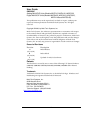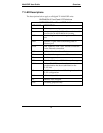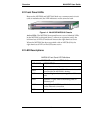
Overview MultiVOIP User Guide
10
Introduction to TI MultiVOIPs (MVP2400,
MVP2410, & MVP24-48)
We proudly present MultiTech’s T1 Digital Multi-VOIP products.
The MVP2400 is a table-top model; the MVP2410 is a rack-mount
model; and the MVP24-48 is an add-on expansion card that doubles the
capacity of the MVP2410 without adding another chassis. All of these
voice-over-IP products have fax capabilities. All adhere to the North
American standard of T1 trunk telephony using digital 24-channel
time-division multiplexing, which allows 24 phone conversations to
occur on the T1 line simultaneously. All can also accommodate T1 lines
of the ISDN Primary Rate Interface type (ISDN-PRI).
Scale-ability. The MVP2400 and MVP2410 are tailored to companies
needing more than a few voice-over-IP lines, but not needing carrier-
class equipment. When expansion is needed, the MVP2410 can be field-
upgraded into a dual T1 unit by installing the MVP24-48 kit, which is
essentially a second MultiVOIP motherboard that fits in an open
expansion-card slot in the MVP2410. The upgraded dual unit then
accommodates two T1 lines.
T1 VOIP Traffic. The MVP2400/2410 accepts its outbound traffic from
a T1 trunk that’s connected to either a PBX or to a telco/carrier. The
MVP2400/2410 transforms the telephony signals into IP packets for
transmission on LANs, WANs, or the Internet. Inbound IP data traffic
is converted to telephony data and signaling.
When connected to PBX. When connected to a PBX, the
MVP2400/2410 creates a network node served by 10/100-Base T
connections. Local PBX phone extensions gain toll-free access to all
phone stations directly connected to the VOIP network. Phone
extensions at any VOIP location also gain toll-free access to the entire
local public-switched telephone network (PSTN) at every other VOIP
location in the system.
When connected to PSTN. When the T1 line(s) connected to the
MVP2400/2410 are connected directly to the PSTN, the unit becomes a
Point-of-Presence server dedicated to local calls off-net.
H.323 & SIP. Being H.323 compatible, the MVP2400/2410 can place
calls to telephone equipment at remote IP network locations that also
contain H.323 compatible voice-over-IP gateways. It will interface with
H.323 software and H.323 gatekeeper units. H.323 specifications also
bring to voip telephony many special features common to conventional
telephony. H.323 features of this kind that have been implemented into
the MuliVOIP include Call Hold, Call Waiting, Call Name


















